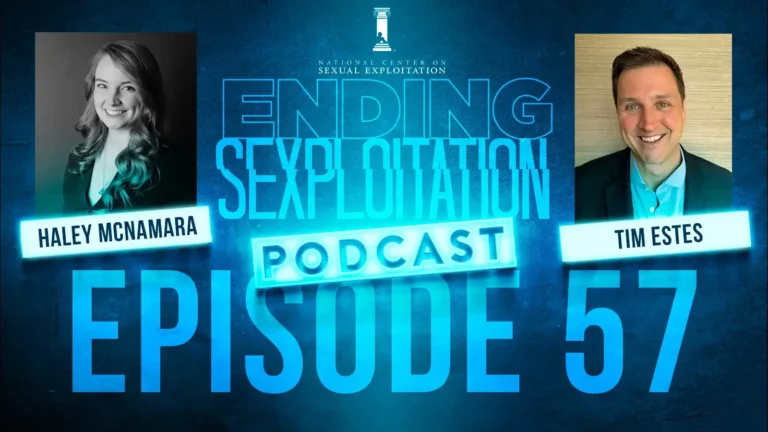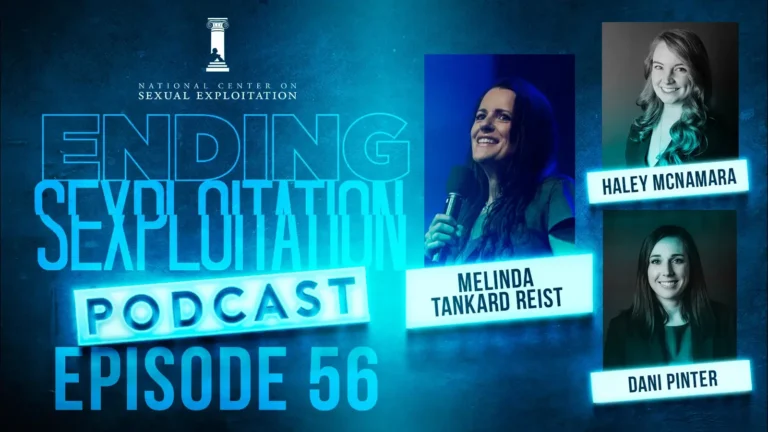As parents, when the topic of protecting our children from pornography comes up, we often go right to that overwhelmed, frustrated, and scared state of mind. Thoughts like:
“How can I keep my child from seeing pornography?!? I can barely keep track of him, much less what is on his phone.” “I try and try with filters, monitors, and rules, then my kids go to school, or a friend’s house and they see it anyway!” or “Oh no! Her brain is going to be ruined forever! The parental controls never work like they should!”
Let’s face it, the tech companies have the cards stacked against us parents. It feels like no matter what we do, we can’t protect our kids from the social media, big tech, and pornographers’ calculated efforts to get harmful content in front of our kids’ eyes and into their brains. This is not ok. It must change.
But in the meantime, rather than scrambling frantically trying to protect our children from ever seeing pornography (which is almost impossible), maybe we can try preparing our child to become pornography resistant.
Building pornography resistance in your child is a process that takes time and effort, but it is something parents can control. And you or your child don’t have to be perfect! You both just have to keep trying. If and when pornography slips through the filters or rules, the pornography resistant child has good relationships, communication skills, and a plan in place to handle the situation and get help.
If and when pornography slips through the filters or rules, the pornography resistant child has good relationships, communication skills, and a plan in place to handle the situation and get help. Share on XThere are three important aspects of building pornography resistance:
Relationships
Work on your parent/child relationship. If you have a good relationship, your child will be more inclined to listen to your words and follow your example when dealing with pornography. Spend time doing things your child loves. Laugh and smile with your child. Hug them. Every day make sure your positive interactions with your child are far greater than your negative interactions with your child.
Teach your children to have real relationships with others. Screen time and digital interactions are now often replacing real life connections with people. Kids need the real connection to help create the emotional stability and confidence needed to resist pornography. Encourage your child to create 3-5 close relationships with people while not using a screen. Consider baking, playing board games, hiking, walking a dog around the block, arts and crafts, tossing a ball outside, biking, skating…find something your child likes to do that does not involve a screen, and do it with them. Or have them invite a friend to do it with them. Creating relationships will help keep your child less vulnerable to pornography and strengthen your child’s pornography resistance.
Communication – Often and Open
It is critical to communicate OPENLY and OFTEN with your child about pornography, sexuality, and internet safety. The goal of this communication is to create a shame free communication culture with your child. Find out what your child is seeing, hearing, and experiencing online. To do this, ask questions, listen to answers, and share the truth. In age-appropriate ways, talk about these topics openly and often: at the dinner table, during the car ride, even over a text. As you talk openly and often about pornography with your child, he/she will feel more comfortable talking to you about it. Let your child know that they can always talk to you about anything they have heard, seen, or experienced online.
Some questions you can ask to help start a conversation are: “Have you seen anything on your phone today that made you feel uncomfortable? What did you do about it?” “I noticed you got a text from a friend that didn’t seem too safe- what should we do about it?” “Today I was searching for something on my phone, and an inappropriate ad popped up. Has that ever happened to you?”
If it makes your child feel more comfortable, work together to choose a phrase your child can say to talk to you about something they saw online. For example, “Mom, today I was brave.” “Dad, I had to be a leader today.” When children have a planned out phrase it can make it easier for them to bring up the topic and it can alert the parents to pay attention and listen.
Communicate openly about what to do if your child sees pornography, and come up with a plan. Practice your child’s plan with them through role playing (learn more about how to use the tool of roleplaying here!). An easy plan is the three Rs: recognize, refuse, and report. Practice each of these steps and help your child feel especially comfortable in reporting every time they see pornography to you or a trusted adult. If your child is able to report what happened to you or a trusted adult, they are much more resistant to the power of pornography.
All of this open and often communication takes practice. Don’t be discouraged if it doesn’t go so well when you are starting out. Just keep trying!
Question: what are your best tips for talking to children about how to stay safe online?
— National Center on Sexual Exploitation (@NCOSE) August 13, 2022
Aggressive Protection
Even when you have worked on having a good relationship and you communicate openly and often, you still need to be doing what you can to keep the pornography out of the hands, eyes, and minds of your children. Would you ever leave even the most well-taught and trustworthy child alone in a room full of pornographic magazines and tell them not to look? No.
Social media, big tech, and pornographers are aggressively trying to get your child’s eyes, so you must be just as aggressive in trying to keep it off of your child’s screens. Don’t leave them to face these industries alone. Find a filter, parental controls, or monitoring software that will work for you. We’ve compiled a list of filters and controls for you at our Resources page; navigate to Prevention and Recovery Resources >Explore These Resources > Tech Solutions: Filtering, Accountability & Parental Controls.
Futher, it’s important to talk with your child to create and explain rules around their use of technology. For example, you may wish to set house rules like: no phones in bedrooms, phones and devices must be plugged in at a certain time each night, phone will be checked and monitored by parents anytime and on a regular basis.
You may not be able to stop every pornographic image from reaching your child, but you can focus on building pornography resistance in your child. Start by strengthening relationships, communicating often and openly, and aggressive protecting your child from tech companies. Don’t get overwhelmed! Just choose one idea from this article and work on it this week! Small sustainable changes bring great results.
About the Author: Jill Geigle is the Director of Parent & Child Advocacy at NCOSE



